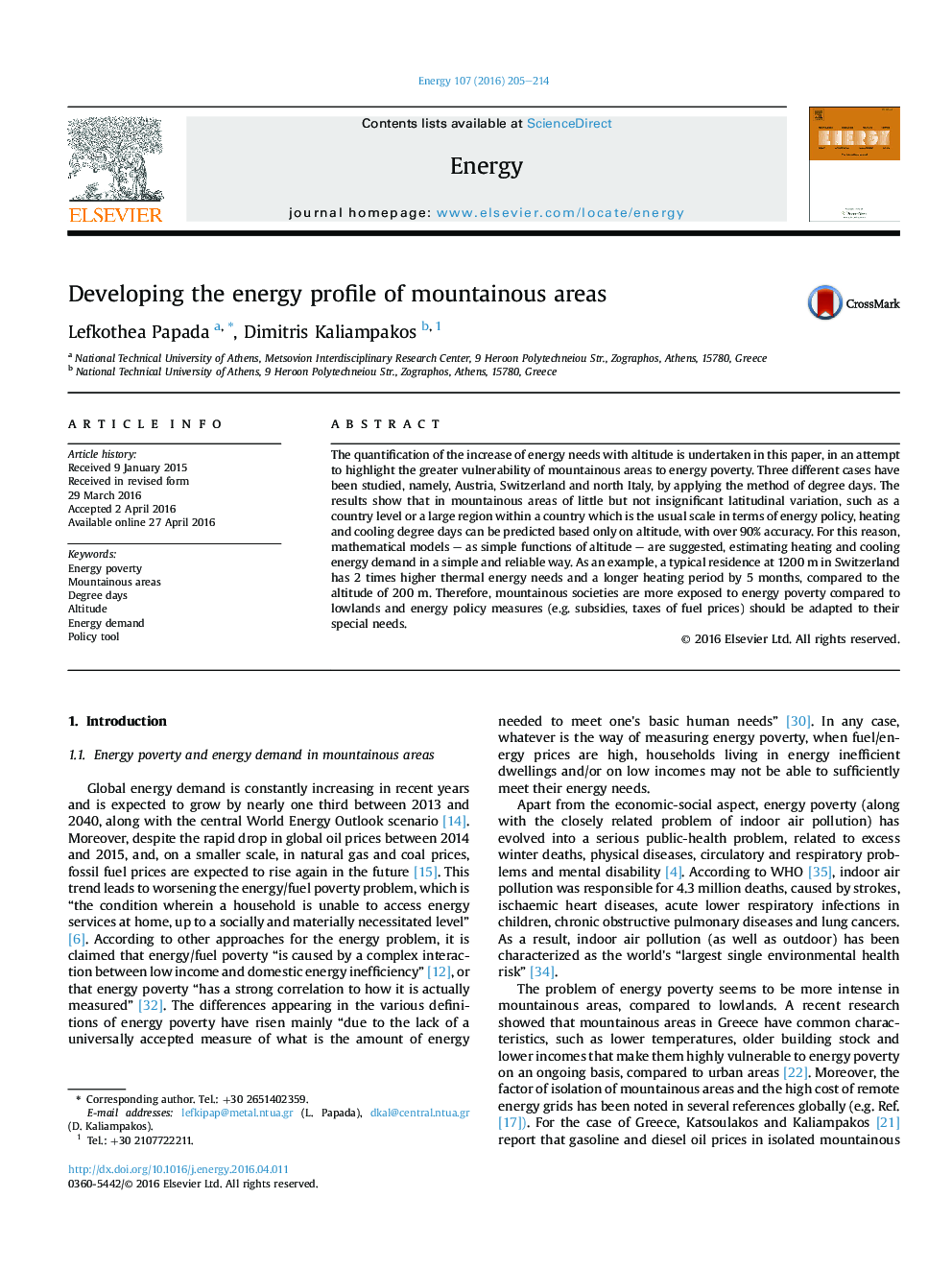| Article ID | Journal | Published Year | Pages | File Type |
|---|---|---|---|---|
| 1730832 | Energy | 2016 | 10 Pages |
•Altitude is the predominant factor affecting energy demand in a mountainous region.•Heating degree days are linearly related to altitude, with Adjusted R2 > 90%.•Cooling degree days are exponentially related to altitude, with Adjusted R2 > 95%.•A typical home has nearly two times higher thermal needs at 1200 m than at 200 m.•Mathematical models are suggested for Austria, Switzerland and North Italy.
The quantification of the increase of energy needs with altitude is undertaken in this paper, in an attempt to highlight the greater vulnerability of mountainous areas to energy poverty. Three different cases have been studied, namely, Austria, Switzerland and north Italy, by applying the method of degree days. The results show that in mountainous areas of little but not insignificant latitudinal variation, such as a country level or a large region within a country which is the usual scale in terms of energy policy, heating and cooling degree days can be predicted based only on altitude, with over 90% accuracy. For this reason, mathematical models – as simple functions of altitude – are suggested, estimating heating and cooling energy demand in a simple and reliable way. As an example, a typical residence at 1200 m in Switzerland has 2 times higher thermal energy needs and a longer heating period by 5 months, compared to the altitude of 200 m. Therefore, mountainous societies are more exposed to energy poverty compared to lowlands and energy policy measures (e.g. subsidies, taxes of fuel prices) should be adapted to their special needs.
